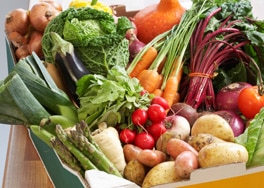Importance of Good Nutrition
Your food choices each day affect your health — how you feel today, tomorrow, and in the future. Good nutrition is an important part of leading a healthy lifestyle. Combined with physical activity, your diet can help you to reach and maintain a healthy weight, reduce your risk of chronic diseases (like heart disease and cancer), and promote your overall health.The Impact of Nutrition on Your Health
Unhealthy eating habits have contributed to the obesity epidemic in the United States: about one-third of U.S. adults (33.8%) are obese and approximately 17% (or 12.5 million) of children and adolescents aged 2—19 years are obese.1 Even for people at a healthy weight, a poor diet is associated with major health risks that can cause illness and even death. These include heart disease, hypertension (high blood pressure), type 2 diabetes, osteoporosis, and certain types of cancer. By making smart food choices, you can help protect yourself from these health problems.
The link between good nutrition and healthy weight, reduced chronic disease risk, and overall health is too important to ignore. By taking steps to eat healthy, you'll be on your way to getting the nutrients your body needs to stay healthy, active, and strong. As with physical activity, making small changes in your diet can go a long way, and it's easier than you think!
Eight Healthy Eating Goals
1- Small changes can make a big difference to your health. Try incorporating at least six of the eight goals below into your diet. Commit to incorporating one new healthy eating goal each week over the next six weeks. You can track your progress through PALA+.2- Make half your plate fruits and vegetables: Choose red, orange, and dark-green vegetables like tomatoes, sweet potatoes, and broccoli, along with other vegetables for your meals. Add fruit to meals as part of main or side dishes or as dessert. The more colorful you make your plate, the more likely you are to get the vitamins, minerals, and fiber your body needs to be healthy.
3- Make half the grains you eat whole grains: An easy way to eat more whole grains is to switch from a refined-grain food to a whole-grain food. For example, eat whole-wheat bread instead of white bread. Read the ingredients list and choose products that list a whole-grain ingredients first. Look for things like: "whole wheat," "brown rice," "bulgur," "buckwheat," "oatmeal," "rolled oats," quinoa," or "wild rice."
4- Switch to fat-free or low-fat (1%) milk: Both have the same amount of calcium and other essential nutrients as whole milk, but fewer calories and less saturated fat.
5- Choose a variety of lean protein foods: Meat, poultry, seafood, dry beans or peas, eggs, nuts, and seeds are considered part of the protein foods group. Select leaner cuts of ground beef (where the label says 90% lean or higher), turkey breast, or chicken breast.
6- Compare sodium in foods: Use the Nutrition Facts label to choose lower sodium versions of foods like soup, bread, and frozen meals. Select canned foods labeled "low sodium," "reduced sodium," or "no salt added."
7- Drink water instead of sugary drinks: Cut calories by drinking water or unsweetened beverages. Soda, energy drinks, and sports drinks are a major source of added sugar and calories in American diets. Try adding a slice of lemon, lime, or watermelon or a splash of 100% juice to your glass of water if you want some flavor.
8- Eat some seafood: Seafood includes fish (such as salmon, tuna, and trout) and shellfish (such as crab, mussels, and oysters). Seafood has protein, minerals, and omega-3 fatty acids (heart-healthy fat). Adults should try to eat at least eight ounces a week of a variety of seafood. Children can eat smaller amounts of seafood, too.
9- Cut back on solid fats: Eat fewer foods that contain solid fats. The major sources for Americans are cakes, cookies, and other desserts (often made with butter, margarine, or shortening); pizza; processed and fatty meats (e.g., sausages, hot dogs, bacon, ribs); and ice cream.
Source: https://www.hhs.gov/fitness/eat-healthy/importance-of-good-nutrition/index.html